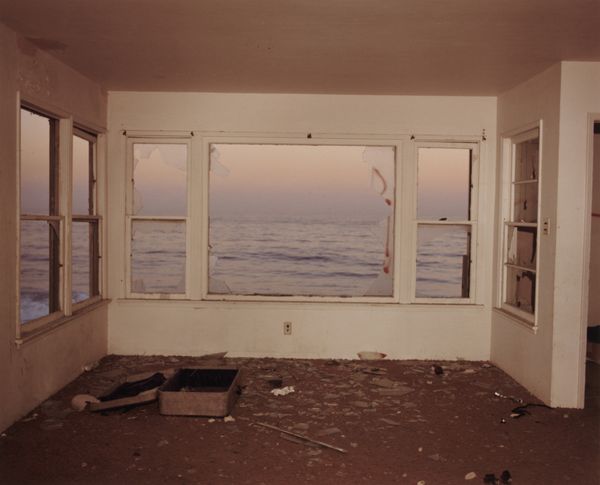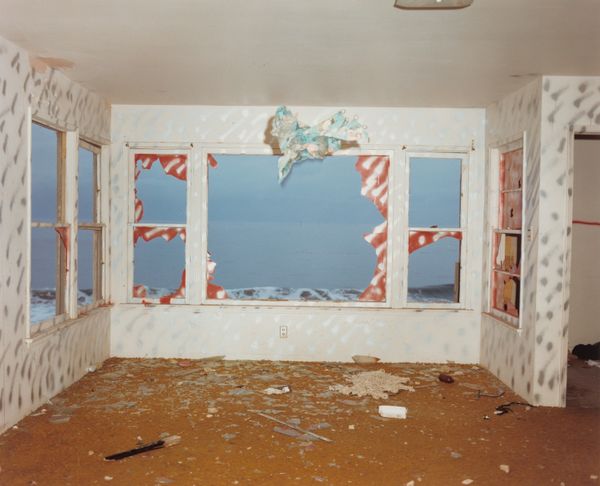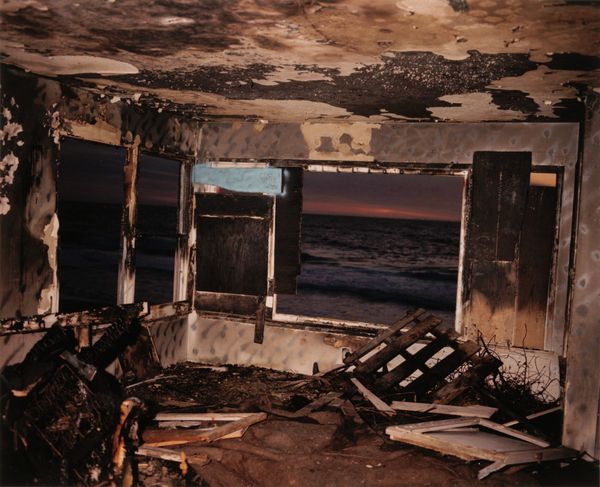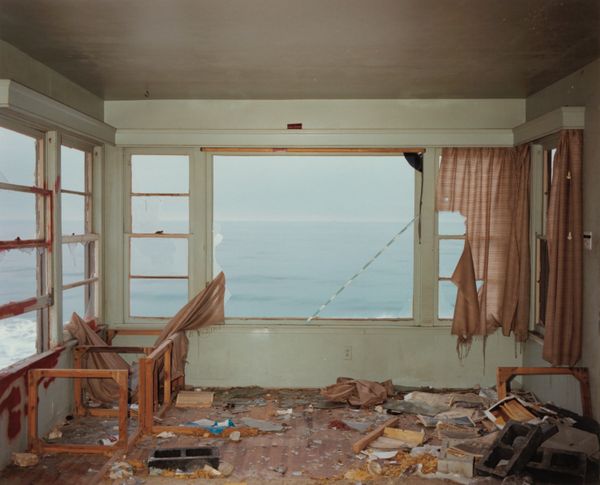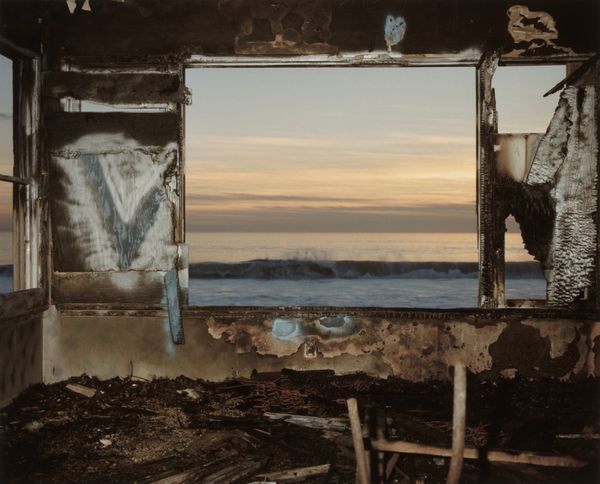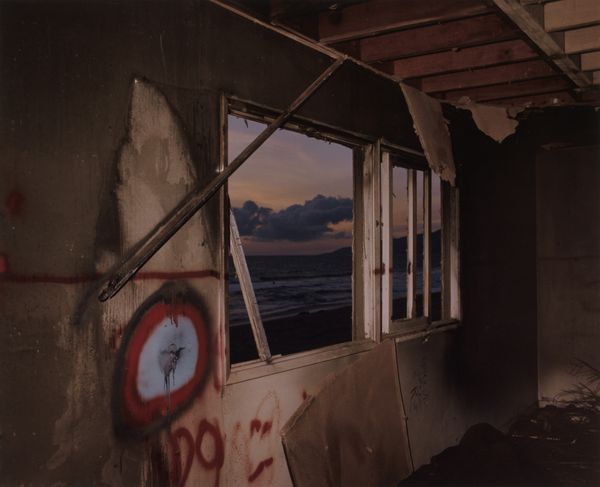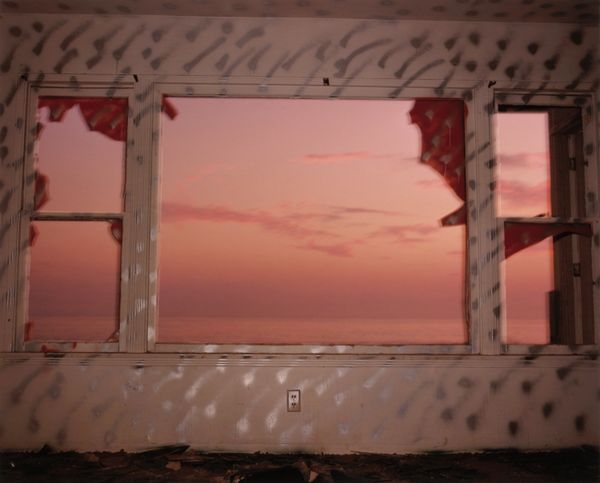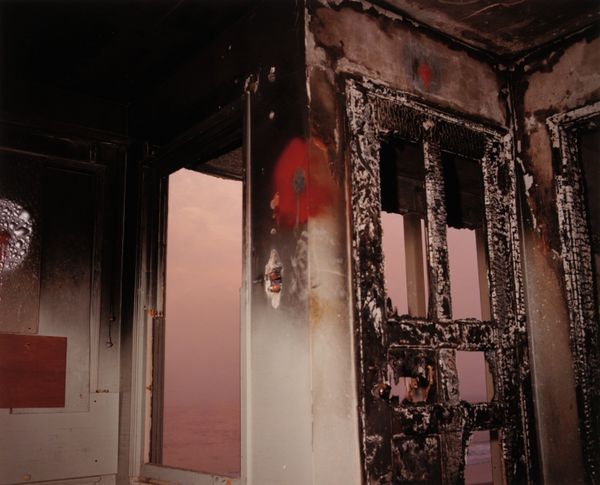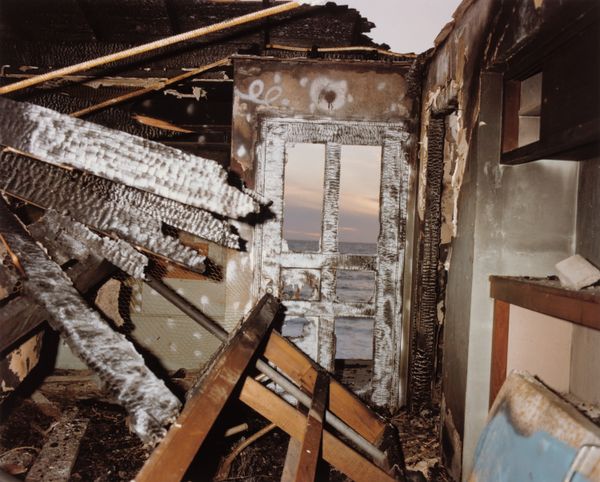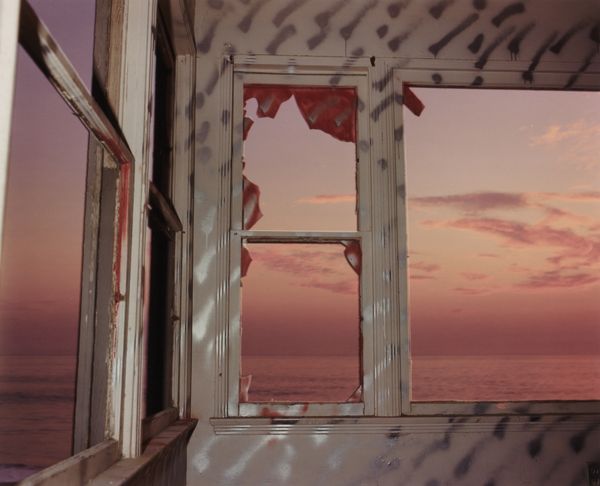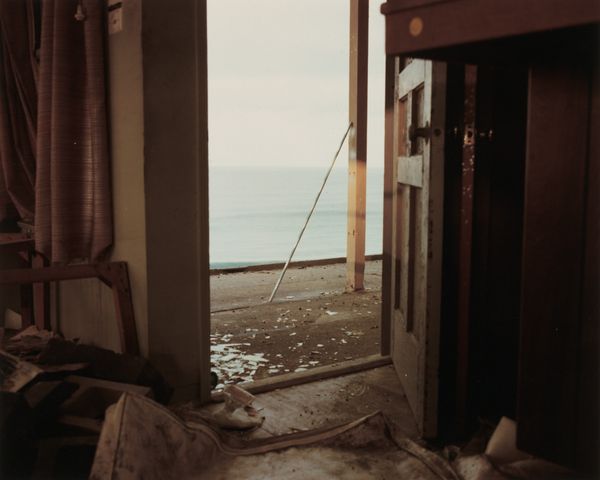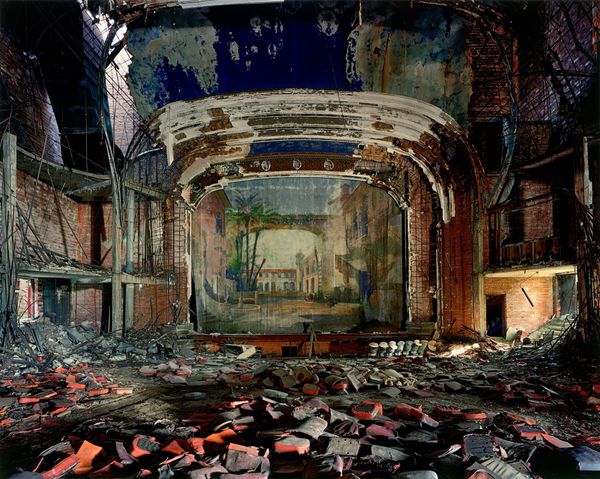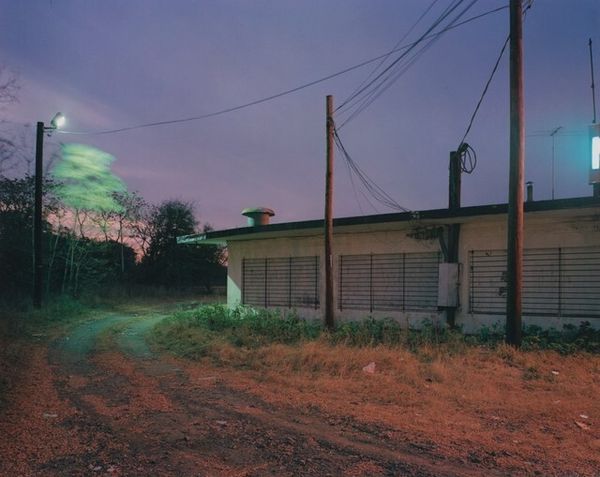
Dimensions: image: 24.7 × 30.5 cm (9 3/4 × 12 in.) sheet: 27.9 × 35.4 cm (11 × 13 15/16 in.)
Copyright: National Gallery of Art: CC0 1.0
Curator: Here we have "Zuma #65," a 1977 photograph by John Divola. At first glance, what do you see? Editor: An eerie beauty. It’s a room stripped bare, decaying, yet suffused with this absolutely stunning pink light from the sunset visible through shattered windows. A paradox of ruin and sublimity. Curator: Divola, through his lens, presents us with a fascinating interplay between intention and accident. Notice the spray paint markings, these interventions. They function almost as punctuation within the dilapidated structure. Editor: They are like wounds, really, deliberately inflicted atop existing damage. Vandalism layered on vandalism. This space… it's pregnant with absent narratives. Each spray-painted circle becomes a symbol, a failed attempt to fill the void. Do you read this as nihilistic? Curator: I wouldn’t immediately jump to nihilism. Divola engages here in site-specific appropriation. He treats the space as a canvas, layering his own marks upon an existing visual text of abandonment and decay. Consider the horizontality. Editor: True, and that interplay becomes fascinating when you recognize how prevalent empty buildings have been—and continue to be. Consider how such spaces can simultaneously inspire fear and artistic exploration; in this abandoned space, the sunset bleeds through the punctured window frames. I mean the vulnerability feels pointed, stark. Curator: He emphasizes geometric patterns established by the window frames through both structural mirroring and subtle opposition between straight line and vandal markings. Think of how structuralism allows one to see the artist composing space through contrast and repetition. The effect creates visual interest and adds complexity to an otherwise bleak environment. Editor: Right, the desecrated interior of this place serves as an indictment of societal decay but is reborn when coupled with art that dares to explore beyond boundaries! He allows an unflinching look at something otherwise easy—or comforting—to overlook or ignore. Curator: And isn’t it also an assertion of control, even if a futile one, against the ravages of time and entropy? Through this meticulous composition, Divola invites reflection upon themes of impermanence. Editor: It urges us to see what we so often disregard and ponder what happens after. Now that’s something to ponder.
Comments
No comments
Be the first to comment and join the conversation on the ultimate creative platform.
